Curating Learning
Syracuse University faculty, staff and students curate two educational exhibitions at the SU Art Museum along with a collection of digital exhibitions featuring works from the museum’s collections.
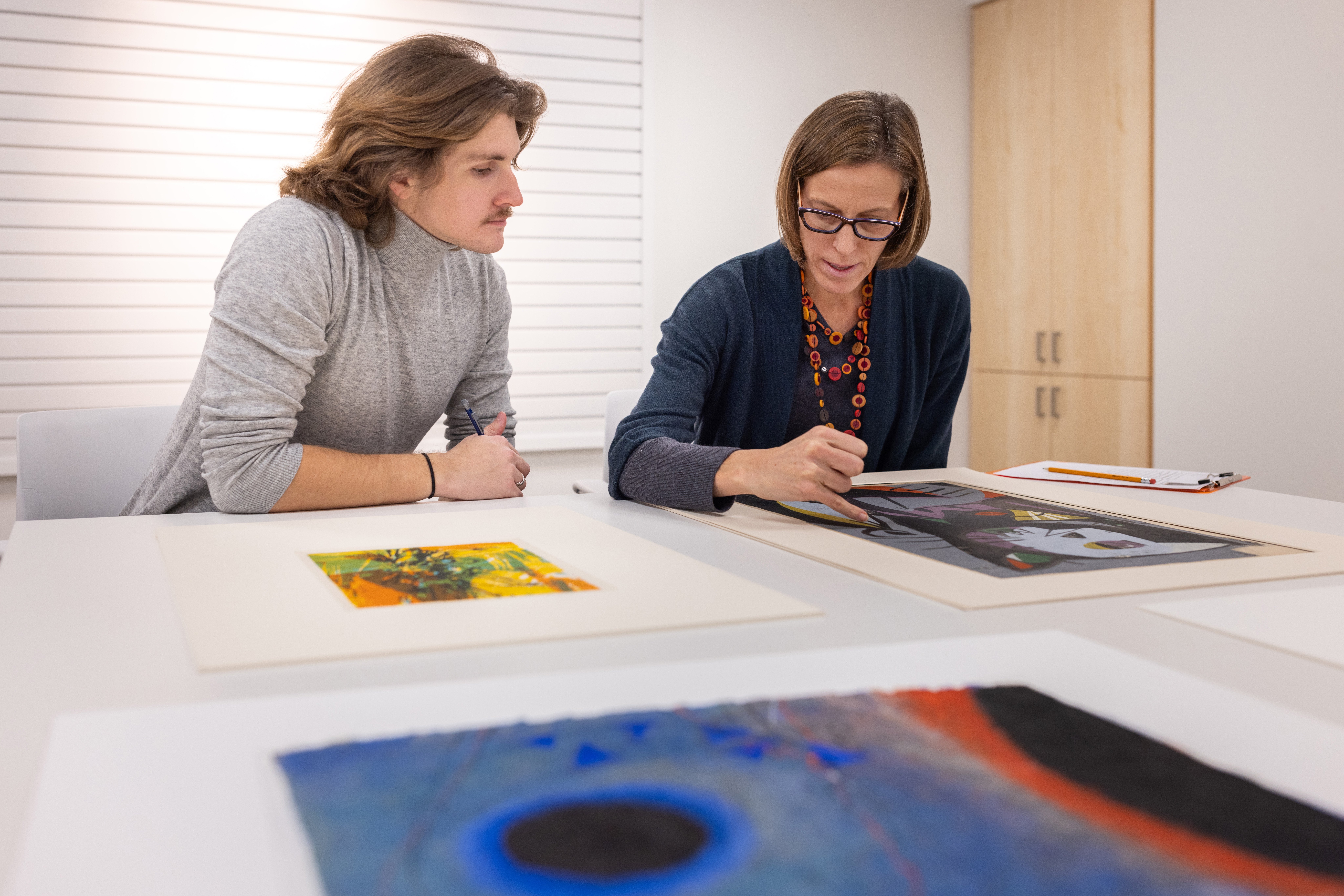
Art can be enjoyed for its aesthetic value. It can also be a powerful tool for education in its capacity to provoke discussion of current topics such as environmental sustainability, social justice, cultural understanding and changing historical perspectives. The Syracuse University Art Museum’s collections of nearly 45,000 works of art and objects of cultural heritage, and over 25,000 examples of graphic art, serve as a resource for students to participate in hands-on research and learn the fundamentals of exhibiting art.
On the heels of the exhibition last fall of works by Haudenosaunee artist Peter B. Jones, which brought attention to Indigenous culture and history, College of Arts and Sciences (A&S) students and faculty are once again playing leading roles in two major exhibitions at the SU Art Museum in Spring 2024.
Art history professor Sascha Scott and graduate students enrolled in her class, HOA 655: Proseminar in Art History, have curated an exhibition titled “To Understand & To Be Understood”: Abstractions by Asian Diasporic Artists. The show features abstract art created between 1960 and 1980 by Asian American artists and Asian diasporic artists living in the United States. This collection brings visibility to artists who are underrepresented both in museums and scholarship, according to Scott.
Mike Goode, William P. Tolley Distinguished Teaching Professor in the Humanities in A&S, co-curated an exhibition titled Assembly with Susannah Sayler, associate professor of art photography in the College of Visual and Performing Arts (VPA), and Edward Morris, instructor in VPA, who are co-directors of The Canary Lab, and museum interim chief curator Melissa Yuen. This exhibit puts objects from the art museum’s permanent collection in dialogue with contemporary artwork by University faculty and several notable alumni artists to highlight environmental issues and foster ecological understanding. This collaboration, arising from the research and scholarship Goode has undertaken as Tolley Professor, aims to provide humanities faculty with access to artwork and educational materials to be used for teaching about ecology and climate issues.
Each exhibition was assembled in partnership with museum staff, including Yuen, Emily Dittman, the museum’s interim director, and Kate Holohan, curator of education and academic outreach at the museum.
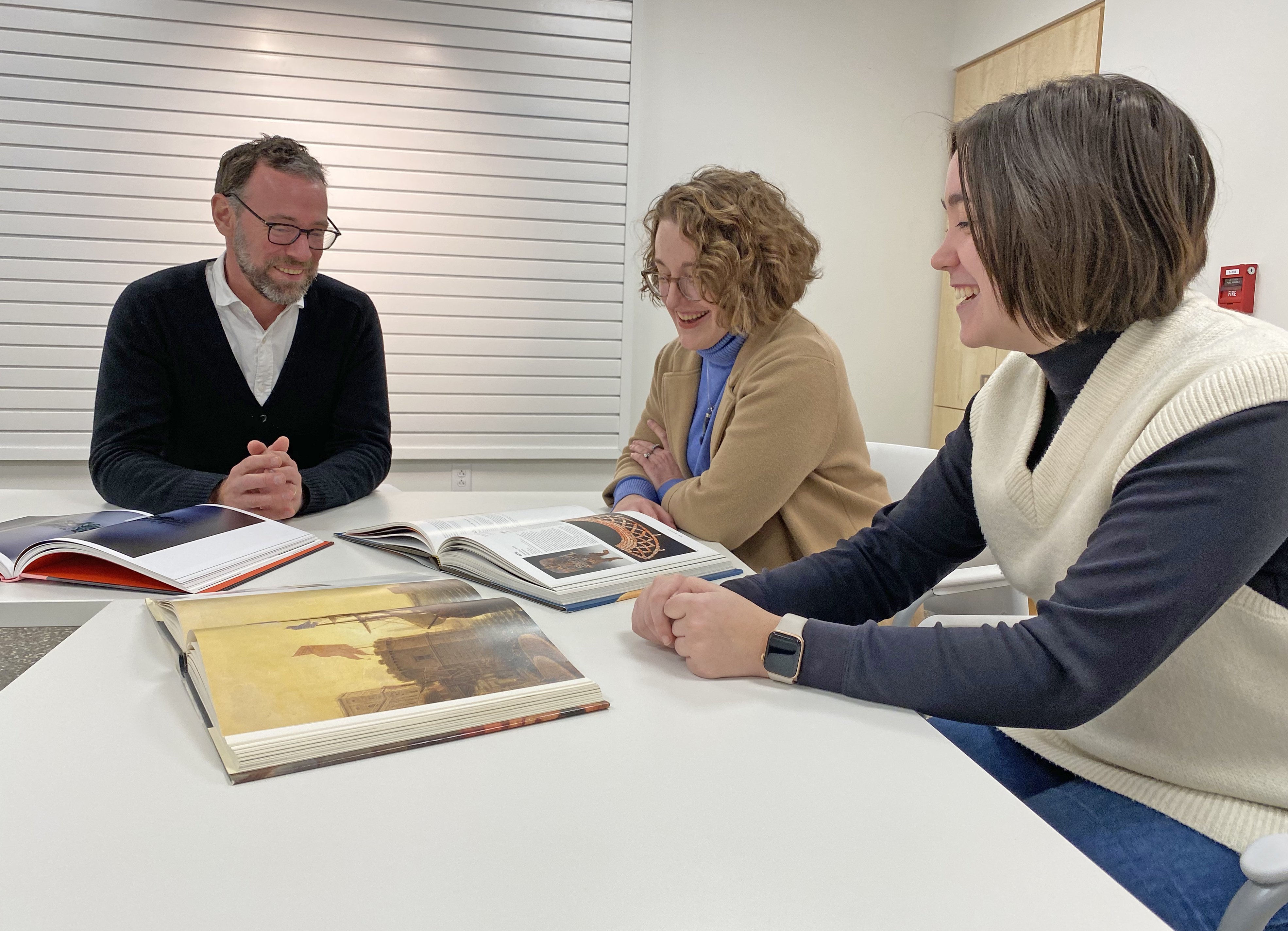
According to Holohan, each collaborative exhibition speaks to the mission of the museum, which is to provide students and faculty access to its collections for teaching, learning and community outreach.
“At the museum, we emphasize object-based teaching, which is active, experiential and student-centered,” says Holohan. “It asks students themselves to make observations and analyze evidence in real time, and, using those observations and analysis, to pose research questions and develop interpretations.”
Both exhibitions are now open, with a public talk for “To Understand & To Be Understood” on February 9, and an opening reception for Assembly on February 22, which will feature a lecture with prominent philosopher Timothy Morton. Learn more about each exhibition and explore a sample of the artwork that will be on view below.
“To Understand & To Be Understood”: Amplifying Awareness of Asian Diasporic Art
During the Fall 2023 semester, students in Scott’s Proseminar in Art History class researched abstract art by Asian American and Asian diasporic artists living in the United States. The 14 works selected for the exhibition all come from the SU Art Museum’s collection and were chosen by Scott in collaboration with interim chief curator Melissa Yuen. Yuen helped guide the curatorial team, as did conversations with history professor Junko Takeda, who conducts research on Asian American histories.

Scott notes that this exhibition brings attention to artists, who, despite creating innovative and important works, are underrepresented in museums and scholarship.
“This exclusion is the product of long-standing biases against Asians and Asian Americans in the United States. The exhibition was conceived during SU’s #NotAgainSU movement. As part of this movement, students rightly complained about lack of visibility on campus,” says Scott. “The aim of this exhibition is to call attention to the museum’s excellent collection of Asian and Asian American art from the 20th century and inspire students and professors to integrate this art into their research and teaching in the future.”
“To Understand & To Be Understood” features a diverse collection of artists and styles. Some of the artists were born in China or Japan and immigrated to the United States; others were born in the United States, including places like Utah and Hawai’i. Their works range from paintings to ceramics to prints and represent a wide array of avant-garde movements from the post-World War II era. Scott, Yuen and Takeda worked with the student curators, all of whom are enrolled in the M.A. Art History program in A&S, to highlight the contexts in which the artists were working, as well as to explore how the artists engaged with different radical movements while also creating innovative works framed by their own unique techniques, ideas and aesthetic sensibilities.
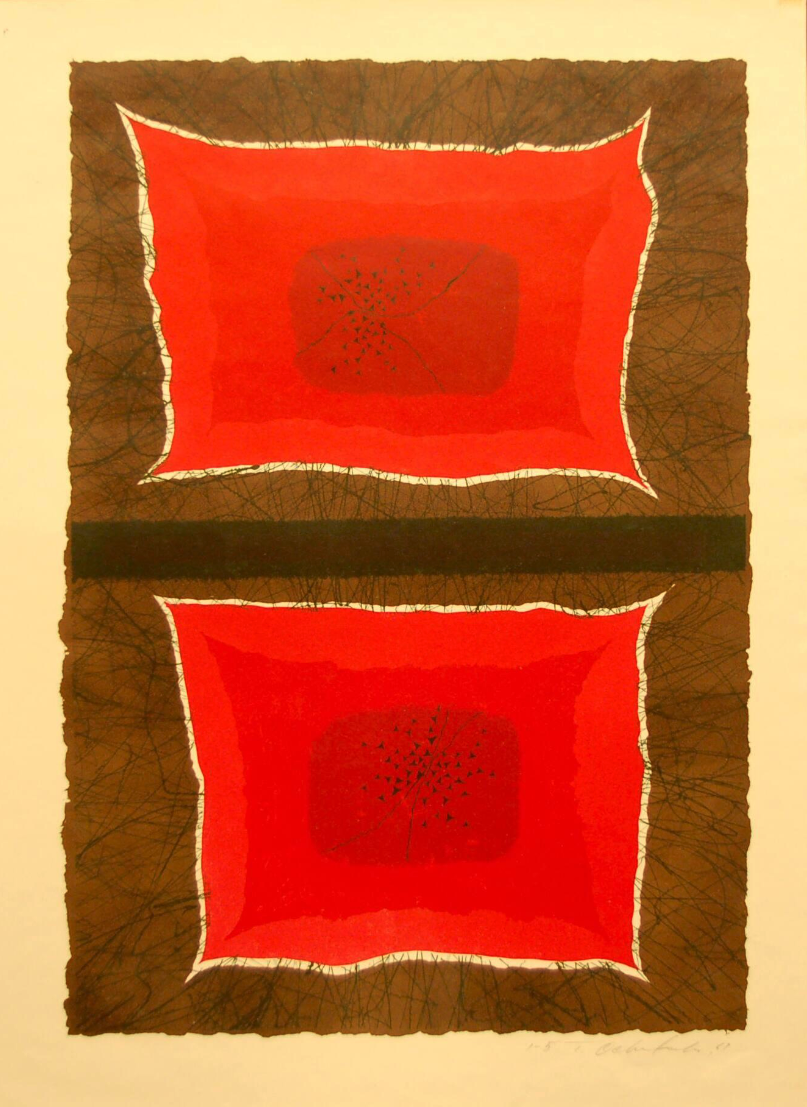
“All of the artists faced discrimination at some point in their lives, be it through Japanese interment, an inability to gain citizenship, immigration laws or reductive reviews of their work,” says Scott. “Despite these challenges, these artists were vibrant members of arts communities, beloved teachers and contributed to important art collectives.”
Three artworks in the exhibition are by Tetsuo Ochikubo G’68 (1923–1975), an alumnus and former professor at Syracuse University. Students drew the title of the exhibition from a statement by Ochikubo that applies to all the artists in the show. “He hoped, through the language of abstraction, ‘to understand and to be understood,’” Scott says.
A Humanistic Approach to Climate Change
While scientific research is critical in observing and documenting environmental challenges, the humanities play an important role in helping society understand and respond to the implications of the ongoing climate crisis. When Mike Goode became the Tolley Professor in 2022, he wanted to focus his professorship on this kind of approach to ecology and climate.
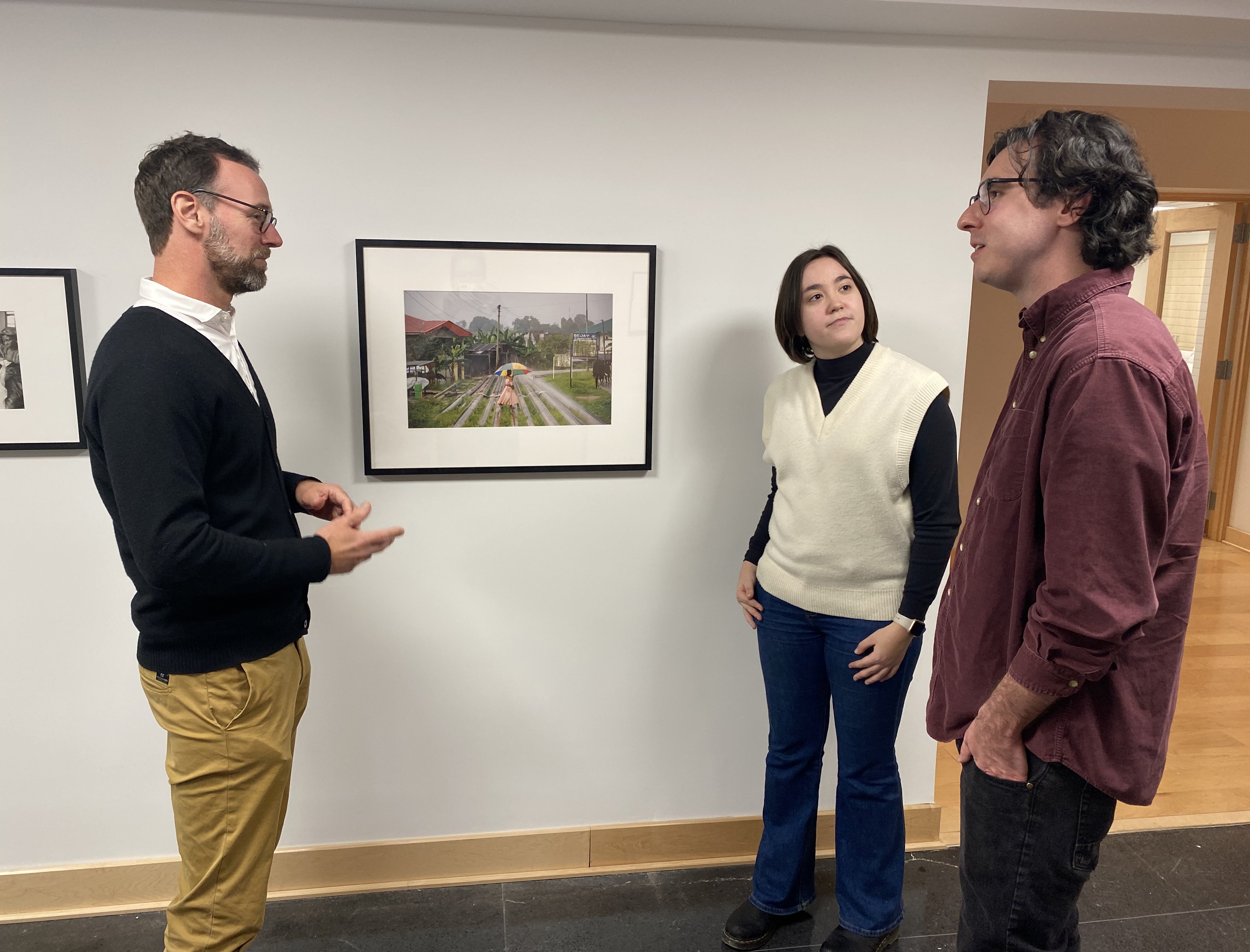
“The science of climate change is not in doubt. Figuring out better practices of living through a future whose changes cannot be reversed so much as mitigated, and whose harms will be distributed inequitably—depends less on policy in the end than on changing culture,” says Goode. “If positive change lies in people starting to think and feel differently about the ecological complexities of the world they inhabit, then art can sometimes help with that more than arguments can.”
Soon after the start of his professorship, Goode created the Art, Ecology and Climate Project. He assembled a team of students, including Jeffrey Adams, a Ph.D. candidate in English whose work on the project was supported by the Graduate School, and Abigail Greenfield ’25 and Jeanelle Cho ’24, who each received SOURCE grants funding their involvement. Together, they identified artworks in the museum’s collection with ecological significance. The team curated those works into 15 topical e-museums featuring nearly 1,000 objects from the University’s art collection and coupled each gallery with related teaching guides published on the art museum’s website.
From the hours of combing through the museum’s collections, Goode says he developed an intimate knowledge of the assortment of its ecologically relevant artworks. He then connected with Sayler, Morris and Yuen to select the objects from the SU Art Museum’s permanent collection that could be put into conversation with artworks by current and former faculty, and alumni of Syracuse for the Assembly exhibition.
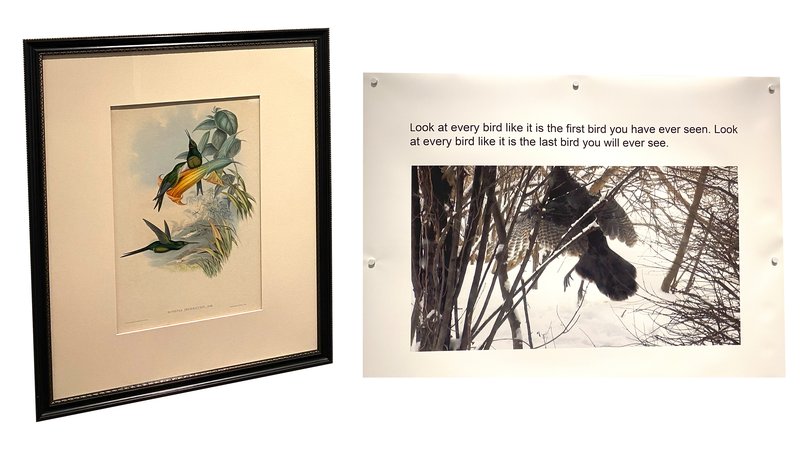
The graphic above shows two works from Assembly that are placed in conversation in the exhibition: “Eugenia imperatrix” (1855) by John Gould (left) and “Look at every bird…” (2021) by Tom Sherman.
One such juxtaposition features a text-image conjunction of VPA emeritus professor Tom Sherman’s harmonious encounters with birds (above, right) placed alongside life-size prints of hummingbird species by famed 19th-century British ornithologist and taxidermist John Gould (above, left). In Gould’s work, he would have bird species killed and brought to London for an artist to render. These renderings would be featured in books targeted toward aristocrats.
“Obviously, in this case, we wanted to create a massive contrast,” notes Goode. “Bound up with the vastly different dynamics of these two bird encounters are ecology’s and ecological artists’ changed relationships with animals, science and imperialism.”
![Graphic shows artworks by three artists featured in Assembly: “Dusk Studies” (2020) by Michael Zuhorski (top), [Torrey pine] (20th century) by Leopold Hugo (lower left) and Martinique (1972) by André Kertész (lower right).](/media/images/Atmospheric_Conditions_Installation_2_SbNFeXb.width-800.jpg)
The graphic above shows artworks by three artists featured in Assembly: “Dusk Studies” (2020) by Michael Zuhorski (top), "[Torrey pine]" (20th century) by Leopold Hugo (lower left) and "Martinique" (1972) by André Kertész (lower right).
Another example focusing more on consonance than contrast is a grouping of objects visually conveying atmospheric conditions. The first set of images (above, top), by Michael Zuhorski G’22, a graduate of VPA’s art photography M.F.A. program, depicts air and light as they interact with wax; the second (above, lower left), by photographer Leopold Hugo, is an atmospheric photograph of a Torrey pine likely created from a waxed paper negative; and the third (above, lower right), by Hungarian photographer André Kertész, captures hazy clouds from a vantage point overlooking what is likely the Caribbean Sea.
“This three-object constellation depicts a history of artists grappling with how to make air visible and palpable as a medium for light and climate,” says Goode.
Faculty, staff and students who helped curate Assembly and “To Understand & To Be Understood” are pushing inquiry beyond the classroom to help bring about cultural and ecological awareness through art. Through immersive learning, their work aligns with University’s commitment to being a leader in experiential inquiry, an area of distinctive excellence in the new Academic Strategic Plan.
Learn more about current and upcoming exhibitions on the SU Art Museum website.
